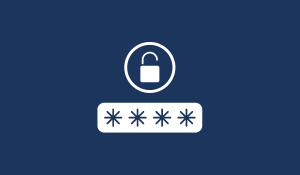Hackers vs. companies: 12 strategies for defence against hacking
Technology is ubiquitous and data has become a valuable resource, the concept of hacking has taken on a prominent role. From hacking into systems for...

Penetration testing tools are the ethical hacker's best friend. Ethical hacking is often referred to as "white-hat hacking," and it involves skilled professionals who use their knowledge of hacking techniques to find and fix vulnerabilities in systems before malicious hackers can exploit them.
In this blog post, we’ll explore what ethical hacking is, how it works, its key benefits, and the essential tools that ethical hackers use to protect organizations in today’s digital landscape. Whether you’re a cybersecurity enthusiast or simply curious about how organizations stay safe online, ethical hacking offers a fascinating glimpse into the world of digital defense. Discover the top tools that ensure robust digital defense.
Penetration testing, often referred to as ethical hacking, plays a pivotal role in identifying vulnerabilities before malicious hackers can exploit them. By simulating real-world cyber attacks, ethical hackers can pinpoint weaknesses in an organization's defenses, providing an invaluable layer of security.
Ethical hacking is not just about finding flaws but understanding their potential impact on business operations. This proactive approach helps in strengthening the overall security posture, ensuring that data breaches and cyber threats are kept at bay. As cyber threats continue to evolve, so must our defense strategies, making penetration testing an indispensable tool in the cybersecurity arsenal.
Ethical hacking follows a structured methodology to assess and secure an organization's systems. The process typically involves the following steps:
Reconnaissance: Ethical hackers begin by gathering information about the target system or network. This might include public data, network details, and even potential weaknesses. It's similar to how a black-hat hacker would begin their attack, but ethical hackers use this information to plan security tests.
Scanning: Next, the hacker actively scans the network to detect open ports, services, and potential vulnerabilities. Tools like Nmap are often used in this phase to map out the network's architecture.
Gaining Access: After identifying potential weaknesses, ethical hackers attempt to exploit them, just as a malicious hacker would. This is often done to see how deep an attack can go and what data or control can be gained.
Maintaining Access: Once they’ve gained entry, hackers may simulate how an attacker would maintain their foothold in the system, perhaps by installing malware or backdoors. Again, this is done to assess the extent of damage that could occur if the system were compromised.
Covering Tracks: This stage involves simulating how attackers might try to cover their tracks to avoid detection. Ethical hackers need to ensure that system logs and other mechanisms can detect and prevent such attempts.
Reporting & Fixing: Finally, ethical hackers compile a detailed report of their findings, including vulnerabilities discovered, exploitation methods, and recommendations for improvement. The organization can then use this information to patch and strengthen their security.
Selecting the right penetration testing tool can be a daunting task, given the plethora of options available. Key criteria to consider include the tool's comprehensiveness in identifying vulnerabilities, ease of use, and integration capabilities with existing security frameworks. An effective tool should provide detailed reports, allowing for actionable insights to improve security measures.
Moreover, scalability and support are critical factors. A good penetration testing tool should grow with your organization, catering to both current and future needs. Additionally, robust customer support ensures that any issues are swiftly addressed, minimizing downtime and maintaining the integrity of your IT infrastructure.
Improved Security: The primary benefit of ethical hacking is the identification and resolution of vulnerabilities before malicious hackers can exploit them. This proactive approach helps organizations protect sensitive data and ensure system integrity.
Compliance with Regulations: Many industries have strict regulations regarding cybersecurity, such as the GDPR, HIPAA, and PCI DSS. Ethical hacking can help organizations comply with these standards by ensuring they have adequate protections in place.
Enhanced Trust: When customers know that a company takes cybersecurity seriously and regularly tests its systems, it boosts their confidence in the brand, potentially leading to better customer relationships.
Cost Savings: By identifying and fixing vulnerabilities early, ethical hacking can save organizations from the financial and reputational damage caused by data breaches, lawsuits, and fines.
Improved Employee Training: Ethical hacking also helps highlight areas where employees need better cybersecurity awareness. Phishing tests, for example, can help determine how susceptible employees are to social engineering attacks.
Open-source tools are a boon for ethical hackers, offering powerful capabilities without the hefty price tag. Here are five must-know tools:
Metasploit: This versatile framework is a favorite among penetration testers for its extensive database of exploits and ease of use. It allows for rapid development and execution of attack scripts.
Nmap: Known for its network discovery capabilities, Nmap helps in mapping out network topology and identifying open ports, services, and potential vulnerabilities.
Wireshark: A powerful network protocol analyzer, Wireshark is essential for capturing and inspecting data packets in real-time, making it invaluable for diagnosing network issues and analyzing traffic.
John the Ripper: This password cracking tool is highly effective in identifying weak passwords, helping organizations enforce stronger password policies.
OWASP ZAP: As a web application security scanner, OWASP ZAP excels at identifying vulnerabilities in web applications, providing detailed reports and suggestions for remediation.
While open-source tools offer significant capabilities, commercial penetration testing tools bring additional benefits that can justify their cost. These tools often come with enhanced features, better integration options, and dedicated support services that can streamline the testing process.
For instance, tools like Burp Suite Professional and Nessus offer comprehensive vulnerability scanning, advanced reporting, and automated testing features that save time and reduce the risk of human error. The investment in commercial tools can be particularly worthwhile for larger organizations with complex IT environments, as they provide a higher degree of reliability and professional support.
As cyber threats become more sophisticated, penetration testing tools are evolving to keep pace. One emerging trend is the integration of artificial intelligence (AI) and machine learning (ML) to enhance threat detection and automate repetitive tasks, allowing ethical hackers to focus on more complex vulnerabilities.
Another trend is the increased use of cloud-based penetration testing tools, which offer scalability and flexibility, making them ideal for organizations with distributed networks. Additionally, the rise of DevSecOps is pushing for continuous security testing throughout the software development lifecycle, ensuring that security is embedded from the ground up. As these trends continue to develop, penetration testing tools will become even more integral to maintaining robust cybersecurity defenses.
Ethical hacking plays a vital role in maintaining the security and integrity of digital systems. By adopting a proactive approach to identifying vulnerabilities, organizations can protect their data, reputation, and customers from the ever-present dangers of cyberattacks. Ethical hackers serve as digital guardians, using their skills to safeguard networks and applications, helping to build a more secure digital world.

Technology is ubiquitous and data has become a valuable resource, the concept of hacking has taken on a prominent role. From hacking into systems for...

Welcome to a deep dive into the world of cybersecurity and network defence. In an era where the digital landscape is as dynamic as it is...

Digital life is now inseparable from daily life. We manage our finances, communicate with loved ones, and store sensitive information all online. But...